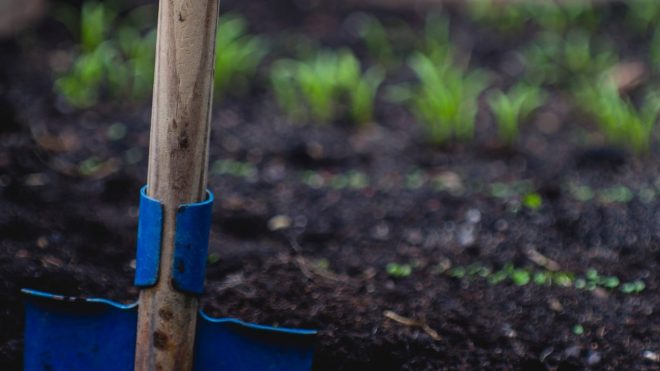Do you know the different soil types used in gardening and horticulture? We often overlook this seemingly simple yet necessary part of a plant’s life. Dirt has many functions that help the diverse ecosystem within it. Quality soil will yield quality results—it’s as simple as that. Understanding the different types of soil and what makes them healthy will give you the tools needed to maintain a vibrant and full garden. In this article we take a closer look at the soil in ways you may have never considered.
Overview of Soil Composition
The five major components of soil are minerals, organic matter, water, air, and microorganisms. Minerals in the soil make up to 45%–60% of its volume. The mineral composition depends on the parent materials from which the soil originated. Organic matter such as the decayed plants and animal material has a significant impact on the properties of the soil. High organic matter content usually yields the most productive plant growth. Anywhere from 2%–60% of a soil’s volume consists of water and air while microorganisms make up less than 1%. Do not let these numbers fool you because they are just as important as the other aspects of soil composition.
What is Soil Texture
Soil texture refers to the distribution of sand, silt, and clay within the dirt. Sand has the largest particles measuring 2 to 0.05 mm diameter followed by silt particles with a 0.05 to 0.002 mm diameter. Clay particles are the smallest measuring less than 0.002 mm diameter. The various combinations of these materials give soil diverse properties that favor different kinds of plants. The chart below from the U.S. Department of Agriculture’s Natural Resources Conservation Service outlines the various soil types based on particle composition.

We will review the four basic soil textures: clay, silt, sandy soil, and loam. Understanding these fundamental elements will give you basic knowledge to make informed decisions about the kind of soil best suited for your garden’s needs.
Clay soil
Soil with high clay content feels dense and lumpy when touched. The small clay particles clump together easily leaving less space for air pockets. Because of this, clay soils tend to retain water and compact easily. This heavy soil gets sticky when wet, which also makes it a bit harder to work with. If dirt on your land largely consists of clay, you should take steps to improve soil drainage for your plants.
On the other hand, clay soil mixtures offer unique benefits to gardens. Clay is naturally rich in nutrients such as iron, calcium, potassium, and other trace organic compounds. The viscosity of this material also provides much needed support for plants in softer compounds like sandy soil. Adding clay to soils that also drain very quickly will help water move through the ground more slowly so plants can absorb what they need.
Silty soil
Silty soils feel smooth to the touch and slippery when wet. The size of silt particles creates small air pockets that water can permeate meaning it drains well. Because of the process in which its made, silty soil tends to be more fertile than other options. It is easy to cultivate, rich in nutrients, and compacts well.
Sandy soil
This material contains a high percentage of sand particles and feels gritty to the touch. Sandy soil has larger air pockets than silt, which results in a very free draining soil. This quick draining capability means water and essential nutrients get washed away too quickly for plants to absorb. Arid climate plants, such as lavender and butterfly weed, have adaptations allowing them to grow well in sandy soils.
Loam Soil
As a favorite amongst gardeners, loam is a proportionate mixture of clay, silt, and sand particles. The sand makes it a well-drained soil, but it does not lose water too quickly because of the silt and clay. The high nutrient content of silt and clay also benefit your garden, and the content mixture makes it easy for plants to absorb. Loam has great texture, structure, and is easy to cultivate. However, don’t forget that arid plants like cacti do not grow well in loam soils.
Understanding your soil is as important as understanding the plants you want to cultivate. Knowledgeable gardeners do not waste the time or money mismatching plants and soil because they know the conditions needed for their plants to thrive. Testing your soil will help determine the pH and condition of your soil so you can better plan your garden. You can also add supplements to help your soil become viable for hearty plant life. Find out more about the importance of fertile soil.

